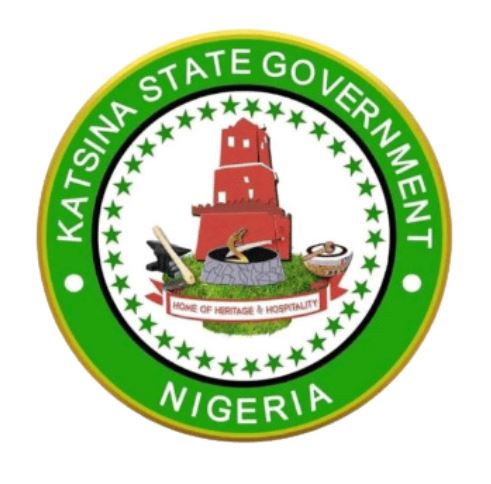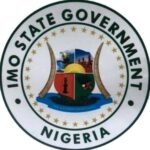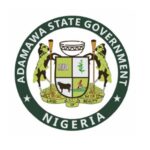This guide comprehensively lists the local governments in Katsina and their elected chairman. Katsina State is in northwestern Nigeria, known as the “Home of Hospitality.”
It borders Zamfara, Kano, Jigawa, Kaduna, and Niger. Katsina has 34 local government areas, with Katsina city as its capital.
The state has about 11.6 million people (2025 estimate), making it the third most populous in Nigeria, though it is 17th in size.
Katsina’s geography includes the Sudanian savanna and some semi-desert areas. The Hausa are the largest ethnic group, with Fulani as a minority. Agriculture is the main economic activity in the state.
READ ALSO: Complete List Of Local Government Areas In Imo State And Their Chairmen
List Of Katsina Local Government Area And its Chairmen
Here is the list of the 34 Local Government Areas (LGAs) in Katsina State and their respective chairmen:
- Katsina – Hon Isah Miqdad AD Saude
- Batagarawa – Hon Yahaya Lawal Kawo
- Charanchi – Hon Ibrahim Sani Koda
- Rimi – Hon Muhammad Ali Rimi
- Jibia – Hon Surajo Ado Jibia
- Kaita – Hon Bello Lawal Yandaki
- Batsari – Hon Mannir Muazu Rumah
- Safana – Hon Abdullahi Sani Brazil
- Danmusa – Hon Ibrahim Namama
- Dutsinma – Hon Kabir Abdul Salam Shema
- Kurfi – Hon Babangida Abdullahi
- Daura – Hon Bala Musa
- Sandamu – Hon Usman Nalado Matawalle
- Zango – Hon Babangida Yardaje
- Baure – Hon Saminu Sulaiman Baure
- Bindawa – Hon Badaru Musa Giremawa
- Mani – Hon Dr. Yunusa Muhammad Sani
- Mashi – Hon Salisu Kallan Dan Kada
- Dutsi – Hon Abdulrazaq Adamu Kayawa
- Maiadua – Hon Mamman Salisu Na-Allahu
- Kankia – Hon Lawal Abdul Gezi
- Kusada – Hon Sani Adamu Dan Gamau
- Ingawa – Hon Abdullahi Idris 02
- Funtua – Hon Abdullahi Goya
- Dandume – Hon Bishir Sabu Gyazama
- Bakori – Hon Aminu Dan-Hamidu
- Danja – Hon Rabo Tambaya
- Sabuwa – Hon Usamatu Adamu Damari
- Faskari – Hon Surajo Aliyu Daudawa
- Kankara – Hon Kasimu Dantsoho Katoge
- Malumfashi – Hon Muntari Abdullahi City
- Kafur – Hon Surajo Bature
- Musawa – Hon Aliyu Idris Gin-Gin
- Matazu – Hon Shamsuddeen Muhammad
READ ALSO: Complete List Of Local Government Areas In Ekiti State And Their Chairmen
History Of Dutsinma LGA
Dutsinma Local Government Area (LGA) in Katsina State, Nigeria, was officially created in 1976. Since its creation, it has become an important part of Katsina’s history and development.
The area’s history shows the lifestyle, traditions, and culture of its indigenous people, mainly the Hausa. These traditions have been passed down through generations and are still practiced today.
The headquarters of Dutsinma LGA is located in the town of Dutsinma. This town is the center of administration and business for the local government.
It is where local officials manage government activities and provide services to the people, such as schools, healthcare centers, and markets.
The people of Dutsinma LGA are mostly from the Hausa ethnic group. Their culture is rich and lively, with many local traditions, festivals, and religious ceremonies that bring the community together.
However, the governance of Dutsinma LGA is managed by an elected chairman and a council that represents the different wards in the area.
Traditional leaders, like village heads and elders, work closely with the local government to help with development plans. These plans often focus on improving education, healthcare, roads, and access to clean water.
Agriculture is the backbone of the economy in Dutsinma LGA. Most residents rely on farming to earn a living, growing crops such as millet, sorghum, and maize.
Small businesses and local trade also provide jobs and support the community’s growth. The area’s landscape is made up of semi-arid savannah vegetation, with both rainy and dry seasons.
These seasons greatly affect farming and the local environment. Conservation efforts are becoming more important as residents try to prevent problems like soil erosion and desertification.
READ ALSO: Complete List Of Local Government Areas In Bauchi State And Their Chairmen
Which Local Government Has The Highest Population In Katsina State?
Katsina Local Government Area, which is also the capital city of Katsina State, has the highest population among all the Local Government Areas in the state.
Located in the northern part of Nigeria, it is near the border with Niger Republic and is situated about 260 kilometers east of Sokoto and 135 kilometers northwest of Kano.
In 2016, the population of Katsina City was estimated at around 429,000 people, and it’s expected to reach 568,600 in 2025.
This large population makes it the most populous Local Government Area in the state. Katsina is a hub for agriculture and trade. The region is known for growing crops like groundnuts, millet, cotton, and guinea corn.
Also, the area produces hides and has industries for processing peanut oil and steel. In addition to crop farming, the area is a center for livestock farming, with many people raising cows, goats, sheep, and chickens.
This agricultural activity contributes significantly to the economy of both the city and the state. The majority of the population in Katsina are Muslims, with most people belonging to the Hausa and Fulani ethnic groups.
These groups have lived in the area for centuries. The city is surrounded by an ancient wall that stretches about 21 kilometers, and its history dates back to around 1100.
Katsina was a major commercial center in the 17th and 18th centuries, instrumental in trade and governance in Hausaland.
However, It was later conquered by the Fulani during the Fulani War and eventually came under British rule in 1903.
Katsina was also home to the first middle school in northern Nigeria, and today, it has several higher education institutions, including Umaru Musa Yar’adua University and Alqalam University.
One of Katsina’s famous landmarks is the Gobarau Minaret, an 18th-century mosque tower made from mud and palm branches.



